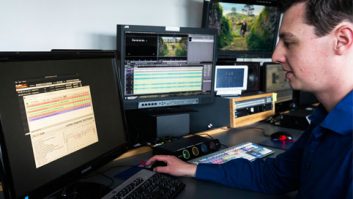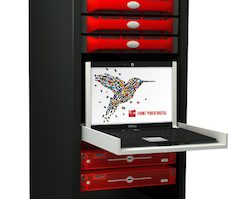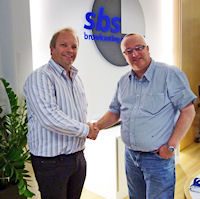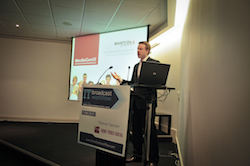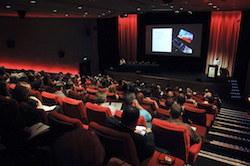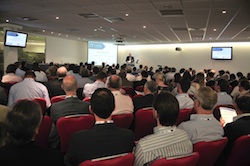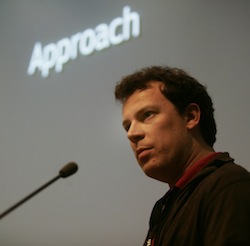
From planning to playout – the automatic workflow. Integrating business-critical modules that are fully embedded in the systems environment. Ricki Berg, technical manager, SBS Broadcasting Networks Ltd, with Gerrit Cornelis, development manager and business consultant, MediaGeniX.
When ProSiebenSAT.1-owned SBS Broadcasting Networks built a new playout centre for its Scandinavian channels in West London in 2007 (which now services all of its other European channels too), it wanted complete automation, from channel planning to playout. The build took three months, but only after three years of planning.
The first thing it had to do was to create a common identifier to follow the asset all the way through the chain. It starts as an ingest request from the channel planning team, and goes all the way through its workflow. “That is one of the strong point that we have in our set up,” said Ricki Berg, its technical manager,
“The scheduling system knows about a programme perhaps years ahead of transmission, because it is at the start, so it’s the most efficient use of metadata.”
All workflows are divided between channel planning teams (who make the decisions) and playout technical teams (who carry out the actions).
“A lot of generic IT systems are being applied to broadcast, but are not created for a realtime environment, which can cause problems.”
It had to migrate all of its suppliers (including MediaGeniX for traffic and planning, S4M for media management and Front Porch Diva for archive) so that it doesn’t have any manual workflow, but that meant that everything had to interoperate.
An ingested file is sent to S4M’s Video Production Management System, and then to Clarify for QC, and to Rhozet Carbon Coder so people can browse the files.
After the Clarify report, plus a short manual check, approval and the creation of a cut list for breaks and metadata, the file is sent back to MediaGeniX What’s On. To save time, someone on a Danish channel can take the Swedish cut list and add to it, if necessary, rather than going through the process again.
The automated QC targets where people need to check further. “With Cerify, there is a lot of tweaking and nudging. You’ve got to be less picky about audio alarms, because there will be lots of them if you set alarm levels too low. But, for discovering video faults or black gaps in a file, it is very good,” he said.
The subtitle file is sent from VPMS to the text provider, using the low-res version to approve and send it on to the subtitle system database.
What’s On creates the transmission playlist, and the subtitle ID and language files are sent to the Aveco Astra automation, which controls the Cavena subtitling system and transmission.
Secondary events, such as coming next graphics, created by What’s On, are sent to graphics automation, and the trigger information to Astra, which controls the Grass Valley K2 playout server. “Because the preparation workflows are integrated, extensive playout workflow is very simple,” he said.
SBS is now looking to create bi-directional data between What’s On and Astra, so that Astra can look ahead 24 hours and is aware of what will be happening. Disaster recovery is currently on site, but it is planning to move it off site, using a PubliTronic Nexus server to allow it playout from another location.
In general, “we had a very smooth integration,” partly because SBS already had IT and broadcast well integrated from a previous location (although that was only after overcoming the fact that IT people “did not have the same concept of the need for a playlist to be frame accurate”). He still sees “a separation between IT and broadcast engineering, although that is diminishing,”
Half of SBS’ engineers continued working at the old location during the three month build. The others (plus new employees) were being trained, with the rest trained after the move. – David Fox


